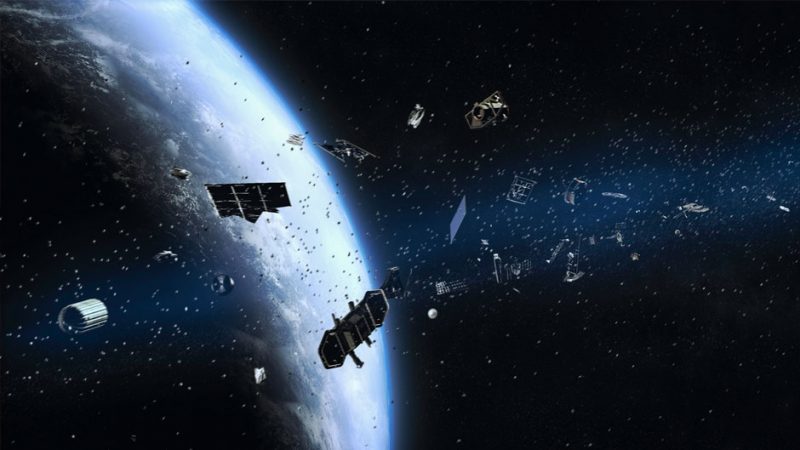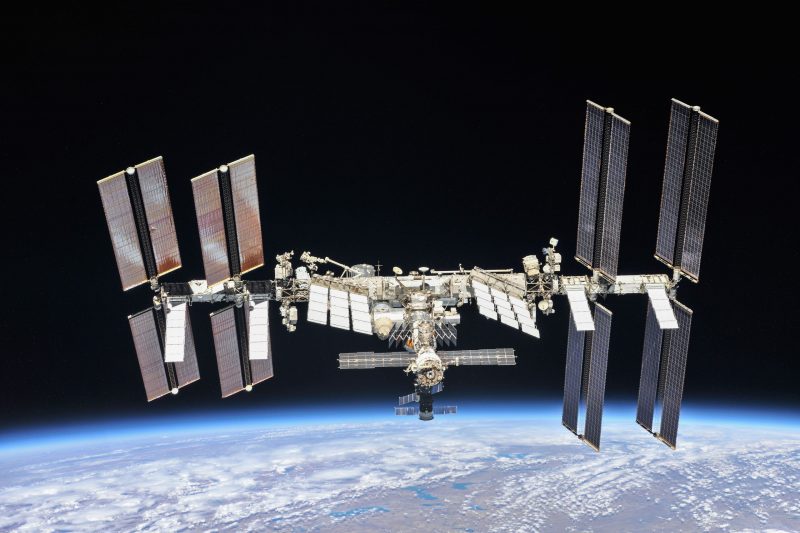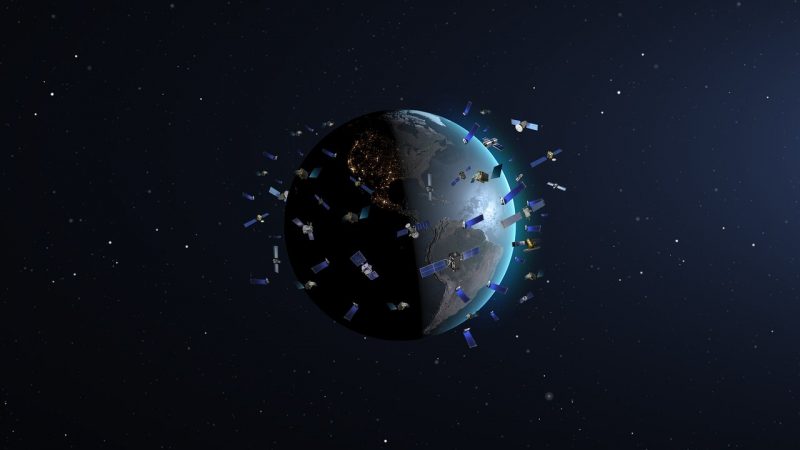
ISS astronauts shelter in return vehicles
On Monday, November 15, 2021, the astronauts on the International Space Station took shelter from debris in their return vehicles. The United Kingdom’s Seradata, which produces a launch and satellite database, suspected the debris is the result of a Russian anti-satellite missile test that may have destroyed the Kosmos 1408 satellite. While the crew has returned to the space station for now, they closed off some modules as a precaution. The cloud of debris has a 90-minute orbital period, so additional close encounters are possible. The U.S. Space Command is working to learn more and will notify countries to maneuver their satellites out of harm’s way if necessary.
This comes on the heels of another event last Wednesday, November 10, when the International Space Station had to dodge space debris in order to avoid a collision. Russia’s space agency saved the station from damage by changing the space station’s orbit by about 0.7 miles (1.1 km). The maneuver allowed them to avoid the remains of a weather satellite that China destroyed during a missile test in 2007. Low-Earth orbit is crowded with satellites, and thousands more are scheduled for launch in the next couple of years, bringing us dangerously close to the possibility of runaway collisions called the Kessler syndrome.

What is the Kessler syndrome?
As early as 1978, NASA scientist Donald Kessler was pondering what would happen as more satellites took up residence in orbit around Earth. He authored a paper, along with Burton G. Cour-Palais, that the Journal of Geophysical Research published on June 1 of that year. They theorized that as the number of artificial satellites increased in Earth’s orbit, so would the probability of collisions between the satellites, until eventually Earth might be saddled with a belt of debris. This theory of a coming cascade of collisions is now known as the Kessler syndrome, and we are closer than ever to that future becoming a reality.
Kessler syndrome: A scenario in which the density of objects in low-Earth orbit is high enough that collisions between objects cause a cascade, with each collision generating space debris that increases the likelihood of further collisions.
The Soviet Union launched the first satellite, Sputnik 1, into space in 1957. By 1990, there were 464 active satellites around Earth. In 2020, there were 3,368 active satellites and nearly as many non-active satellites. Within the next three to four years, SpaceX alone plans to launch around 65,000 Starlink satellites. And other private companies such as OneWeb and countries like China have satellites planned also.
Kessler syndrome in action
Collisions between manmade objects in space have already happened. For example, in 1996, debris from an Ariane rocket that launched to space in 1986 hit the Cerise satellite. The debris floated around Earth’s orbit for a decade before its destructive collision. In 2006, an operating satellite and defunct satellite collided at 26,000 miles an hour (11.7 km/s). The objects, once numbered at two, suddenly became 2,300 fragments of debris that the Department of Defense’s global Space Surveillance Network (SSN) must monitor.
The Space Surveillance Network tracks objects down to 2 inches (5 cm) in size in low-Earth orbit. It tracks objects about 1 yard (1 m) in diameter for those in geosynchronous orbit. Any objects 4 inches or larger that are on a collision course with a satellite, etc., require collision avoidance maneuvers. Sometimes the monitors don’t identify the threat quickly enough to perform an avoidance maneuver, and, in the case of the International Space Station, more drastic steps result. The crew in the space station must retreat to their “lifeboats,” the modules that would take them back to Earth in case of serious damage to the station.
Animation of space debris
The European Space Agency created the video above, which shows a visualization of how much space debris is orbiting Earth at a size of greater than 1 meter, then greater than 10 centimeters, followed by greater than 1 centimeter, and finally all debris greater than 1 millimeter. The video is from 2019. At that time, the number of orbiting space debris at greater than 1 meter was about 5,400 objects. Approximately 34,000 objects were larger than 10 centimeters (which includes 2,000 active satellites). There were 900,000 objects greater than 1 centimeter and 130 million objects greater than 1 millimeter.
The colors in the video denote what category each object is in. Red is for functioning and nonfunctioning satellites, yellow is rocket bodies, green are objects from space missions (covers, caps, etc.) and blue represents fragments.
Deorbiting creates pollution
Quickly deorbiting defunct satellites would help lessen the crowding in low-Earth orbit, but that comes with its own drawbacks. When satellites burn up in our atmosphere, they contribute pollution in the form of metals.
Space rocks composed of various metals impact our atmosphere every day, delivering elements such as iron, nickel and aluminum. But what will the effect be when large amounts of satellites that have reached the end of their lives deorbit and put up to 14 tons of aluminum in the atmosphere every day? Ethan Siegel at The Big Think explained that satellites will contribute up to 30 times the naturally occurring amount of aluminum. He said that aluminum can have a number of impacts on Earth, including:
- the additional seeding of clouds
- changes to Earth’s reflectivity and heat-trapping properties
- the destruction of stratospheric ozone molecules
- disruption of atmospheric circulation at a variety of altitudes

Space is for all of us
The addition of untold numbers of satellites into Earth orbit affects much more than just the chance that collisions will make areas of space unusable. They affect our view of the night sky.
Samantha Lawler of the University of Regina in Canada estimated that, within a few years, every 16th “star” we see in the night sky might be a satellite. On Twitter, Carolyn Porco, planetary scientist and leader of the Cassini Imaging Science team, said:
The night sky belongs to all of us, it’s important for its significance to our sense of place and meaning, and it needs to be preserved.
Bottom line: As ISS astronauts took shelter in return vehicles on November 15, 2021, the Kessler syndrome begins to feel like foregone conclusion. NASA scientist Donald Kessler developed the theory in 1978, in which he described how a high density of satellites in low-Earth orbit might trigger a self-sustaining cascading collision.
The post Astronauts shelter from debris: Kessler syndrome coming to life? first appeared on EarthSky.
0 Commentaires